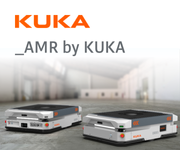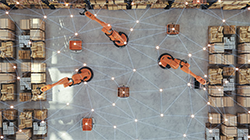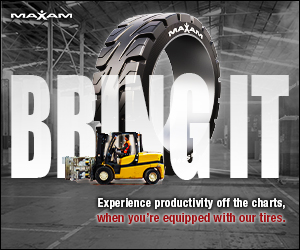This MHI cast episode explores how tariffs are reshaping the global supply chain landscape. From rising operational costs to sourcing disruptions and heightened trade uncertainty, tariffs are forcing businesses to rethink their strategies, including automation, supplier diversification, and localized production. Supply chains can not only weather these challenges but also emerge more agile and resilient.
|
Four companies were recognized for their innovative solutions at ProMat 2025. 2025 MHI Innovation Award winners included Anyware Robotics for Best New Innovation; Concentric for Best Innovation of an Existing Product; Fidus Global for Best Information Technology (IT) Innovation; and GRI for Best New Innovation in Sustainability.
|
The question isn’t whether to automate, but how, where to start, and for what outcomes. Many companies that have successfully advanced along the automation path started small and deliberately, with technologies that boosted process efficiency, integrated easily within their existing systems and their workforce, and produced early operational savings.
Wearable technologies for warehouse and distribution center operations have been around for more than a decade, but it’s only in the last five years, as the tech has matured, that their adoption has become more widespread and real‑world efficiencies are being seen.
For many supply chain leaders, the current economic environment has led to a mindset shift away from expansion and towards optimization. Instead of opening new facilities to meet excess demand, companies are focused on optimizing and consolidating their existing operations.
Even the best‑designed automated systems can become obsolete over time due to changing business dynamics, emerging technologies and years of steady use. That’s why it often pays to take a fresh look at automated equipment to determine whether it’s still the optimal solution for your operations.
MHI is currently conducting a Communications Survey to get input on our online and print publications. We’d love to hear from you. Your insight is extremely valuable and will help us improve our online and print media in 2025 and beyond.
|
From providing materials such as fact sheets and tip cards to working with OSHA and examining dos and don’ts of hoist use at the user level, HMI makes safe working practices a consistent priority.
This annual publication highlights MHI’s 1,000+ member companies, who are the leading suppliers of material handling and supply chain equipment and system and technology solutions. Readers can easily identify solution providers in categories such as automation, robotics, storage systems, software, third-party logistics and more.
The Warehousing Education and Research Council (WERC) recently announced that its e-learning course, Distribution Logistics Fundamentals, is now available in Spanish. This new offering opens doors for Spanish-speaking logistics professionals to grow their skills, boost their careers, and thrive in the dynamic world of warehousing and distribution.
At a time when speed, efficiency and accuracy matter more than ever, how can companies get automated systems to "play nice" for the greater good? Industry leaders share their thoughts on where things are in terms of orchestration, where things are headed—and what might help in the meantime.
|
As industries race toward smarter, more connected operations, one thing becomes clear: Real-time communication is no longer a luxury — it’s a necessity. Here are some common communication challenges faced in automated systems and how slotted microwave guide technology offers an answer to these challenges.
Sustainability remains a major priority across industries, but the green energy transition is facing new geopolitical and economic headwinds. The push for renewable energy, decarbonization and electric vehicle adoption is continuing, but supply chain disruptions, rising costs and strategic decoupling from China could significantly slow progress and make sustainability initiatives more expensive.
|
Explore the future of sustainable packaging with on-demand, right-sized solutions that are transforming packaging processes. This automated model minimizes waste, reduces costs, and enhances product protection, all while making supply chains more adaptable and eco-friendly.
In the last decade, the companies that have excelled in reliability, resilience and profitability have built strategic alignment across three foundational areas: supply network design, supply chain planning and inventory strategy.
Automated Storage and Retrieval Systems have evolved from simple storage aids to highly complex and adaptable technologies capable of addressing a wide range of operational challenges, from space optimization and temperature control to labor efficiency and inventory accuracy.
|

















